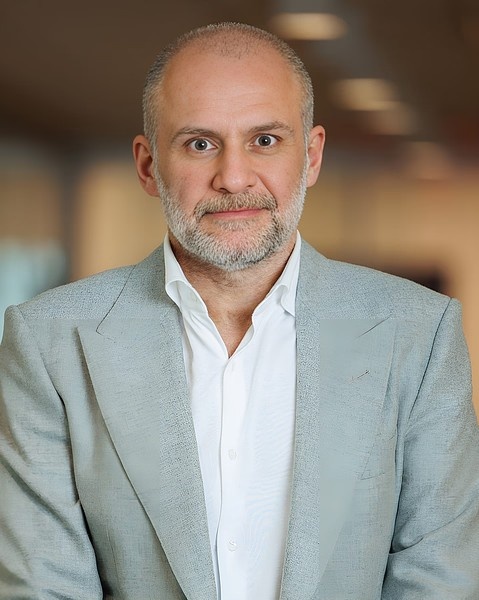

marketing digital marketing
Corporate Communications Is Now Content Strategy: Here’s How to Keep Up
Corporate Communications Is Now Content Strategy: Here’s How to Keep Up
The Evolution of Corporate Communications
The lines between traditional communications and content strategy have fully converged. Once a behind-the-scenes function focused on executive visibility, brand messaging, and stakeholder management, corporate communications now plays a direct role in brand building and demand generation. In a digital-first world, messaging is no longer static. Today’s most effective communications teams are functioning like content engines producing dynamic, always-on narratives that span across media, channels, and customer touchpoints.
Communications as a Lead and Trust Driver
This transformation reflects a broader shift in how trust is earned and attention is captured. Audiences do not differentiate between a CEO’s LinkedIn post, a product press release, or a branded thought leadership piece published on a third-party site. Every asset contributes to brand perception and every communication is now a potential lead magnet, SEO driver, or engagement catalyst. That means public relations professionals must reimagine how they craft and distribute stories.
The New Role of PR in Content Marketing
The traditional rhythms of PR are no longer sufficient. Reactive press outreach or quarterly messaging reviews cannot support the real-time demands of modern content consumption. Audiences expect consistent and contextualized storytelling that matches the cadence of digital platforms. In this environment, PR is no longer just a media relations discipline. It is a critical part of a broader content marketing framework, one that must align with brand voice, buyer journey stages, and business outcomes.
Integrating Digital PR Into Strategy
This is where Digital PR comes in. At its core, digital PR expands the traditional boundaries of earned media to include influencer marketing, search visibility, branded content distribution, and reputation management. It is agile, data-informed, and measurable. By integrating with content strategy, digital PR transforms communications from a one-way broadcast into an ecosystem of multi-touch storytelling that drives brand relevance and performance.
Alignment with Digital Marketing Goals
One of the key pillars of this transformation is alignment with Digital Marketing goals. Communications professionals must now understand audience segmentation, user intent, and platform algorithms. They must also think in terms of marketing funnels creating top of funnel awareness, nurturing interest through content sequencing, and reinforcing brand trust as prospects move closer to conversion. The narrative scaffolding once reserved for investor decks or internal briefs is now being adapted into blog posts, social media threads, executive Q&As, and video scripts.
Measuring Communications with SEO Impact
Measurement is a major catalyst in this evolution. Corporate communications is no longer shielded from performance KPIs. Marketing teams expect communications to contribute to website traffic, backlink authority, share of voice, and engagement lift. This demand for accountability has elevated the role of SEO in communications planning. Media wins are most valuable when they drive discoverability, support search rankings, and establish topical authority in areas aligned with customer needs and commercial priorities.
Deepening B2B Communications
In the B2B space, the convergence of communications and content is particularly pronounced. Decision making cycles are longer and involve more stakeholders, so relevance and trust must be cultivated over time. A traditional press release may introduce a new product, but it is content rich communications whitepapers, founder commentary, analyst coverage, and strategic thought leadership that nurture trust and create long term brand affinity. That is why B2B PR now encompasses a more strategic content layer, focused on depth, value, and ongoing influence.
The Role of B2B Digital Marketing
This evolution also mirrors the rise of B2B digital marketing strategies. In order to remain competitive, B2B brands are investing in omnichannel storytelling that extends well beyond sales enablement. Communications professionals are now expected to shape narratives that resonate not just with journalists, but with analysts, procurement committees, technical audiences, and investor communities. Content must be modular, personalized, and purpose built for relevance across touchpoints.
Real Time Agility and Editorial Thinking
The future of corporate communications will rely on operational agility and cross functional alignment. Story development can no longer be confined to a calendar of planned announcements. Instead, PR teams must act more like editorial desks able to spot opportunities in the cultural and competitive landscape, activate spokespeople in real time, and rapidly develop narratives that feed every content channel from blog to byline.
Collaboration and Performance Driven Strategy
That requires tight collaboration between corporate communications, digital marketing, product marketing, and brand teams. In this new model, every communications asset is treated as part of a broader content strategy. Messaging is integrated into campaign architecture, while performance data shapes future storytelling approaches.
Purpose Driven Storytelling
Perhaps most importantly, this shift is not just about volume of content, but about clarity of purpose. Communications teams must return to the core question of why their stories matter and to whom. Strategic narrative development, authentic brand voice, and ongoing audience engagement will continue to be the cornerstones of effective content. What is different now is the urgency, frequency, and omnichannel nature of that storytelling.
The New Era of Strategic Communications
Corporate communications has moved from a supporting role to a central, strategic function within the marketing organization. It is no longer sufficient to craft a message and hope it lands. The brands that win today are those that treat every piece of communication as an opportunity to connect, educate, and convert.
To keep up, PR professionals must embrace a content first mindset. They must operate at the intersection of creativity, strategy, and performance. And they must see communications not as a separate discipline, but as a fundamental pillar of modern marketing. This is the new playbook and for those ready to evolve, it is a moment of enormous opportunity.

Ronn Torossian
is the Founder & Chairman of 5W Public Relations, one of the largest independently-owned PR firms in the United States. Since founding 5WPR in 2003, he has led the company's growth and vision, with the agency earning accolades including being named a Top 50 Global PR Agency by PRovoke Media, a top three NYC PR agency by O'Dwyers, one of Inc. Magazine's Best Workplaces and being awarded multiple American Business Awards, including a Stevie Award for PR Agency of the Year.




